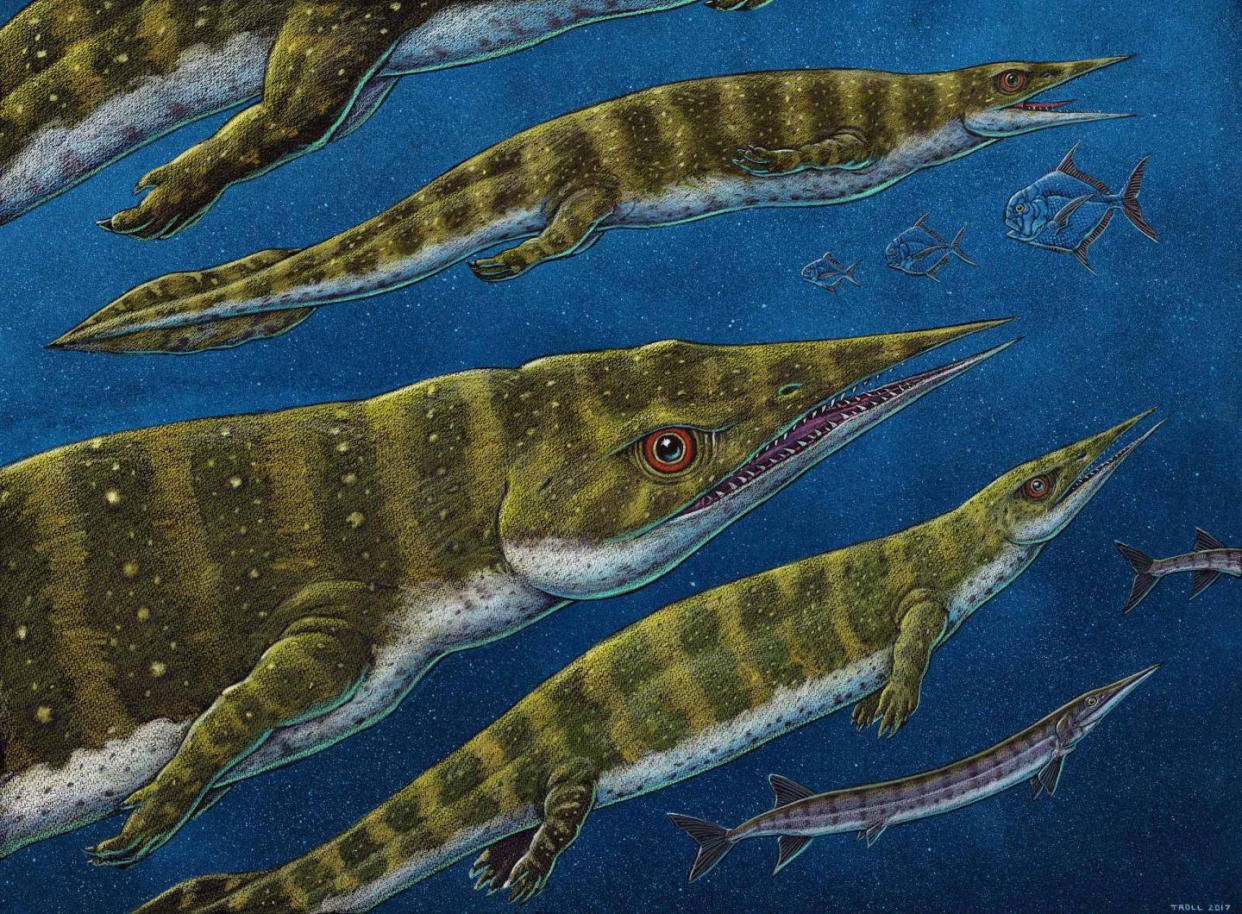Sharp-snouted dinosaurmarine reptile from 200m years ago discovered in Alaska

The fossil of a sharp-snouted marine reptile that lived more than 200 million years ago has been discovered in Alaska.
The new species, called Gunakedeit joseeae, was named after a native Tlingit sea monster known for good luck.
It was confirmed as a species of thalattosaur that grew to lengths of up to four metres in a paper published in the journal Scientific Reports.
The creatures lived in equatorial oceans across the world until they died out near the end of the Triassic Period when their distant cousins, dinosaurs, were first emerging.
It was highly specialised and probably used its pointed snout to go into cracks and crevices and feed on soft-bodied animals and this may have led to its extinction.

University of Alaska Museum of the North director Patrick Druckenmiller said: “It was so specialised and weird, we thought it might be out at the furthest branches of the tree.
“It was probably poking its pointy nose into cracks and crevices in coral reefs and feeding on soft-bodied critters.
“We think these animals were highly specialised to feed in the shallow water environments, but when the sea levels dropped and food sources changed, they had nowhere to go."
The fossil was found when an unusually low tide exposed the typically submerged rock and allowed people to head to the beach and explore.
Read more:
New dinosaur discovered after lying in museum for 30 years
New species of dinosaur-era bird discovered
Insects could die out ‘in worst extinction since the dinosaurs’, experts warn
This is the first time scientists have thoroughly updated thalattosaur interrelationships for 20 years.
Vanderbilt University senior lecturer Dr Neil Kelley said: “Thalattosaurs were among the first groups of land-dwelling reptiles to readapt to life in the ocean.
“They thrived for tens of millions of years, but their fossils are relatively rare so this new specimen helps fill an important gap in the story of their evolution and eventual extinction."
A sample was sent back to the university and a fossil preparation specialist worked in two-week stints over the course of several years to get the fossil cleaned up and ready for study.
As soon as they saw the skull they could tell it was something new because of its extremely pointed snout which was likely an adaptation for the shallow marine environment it lived in.

